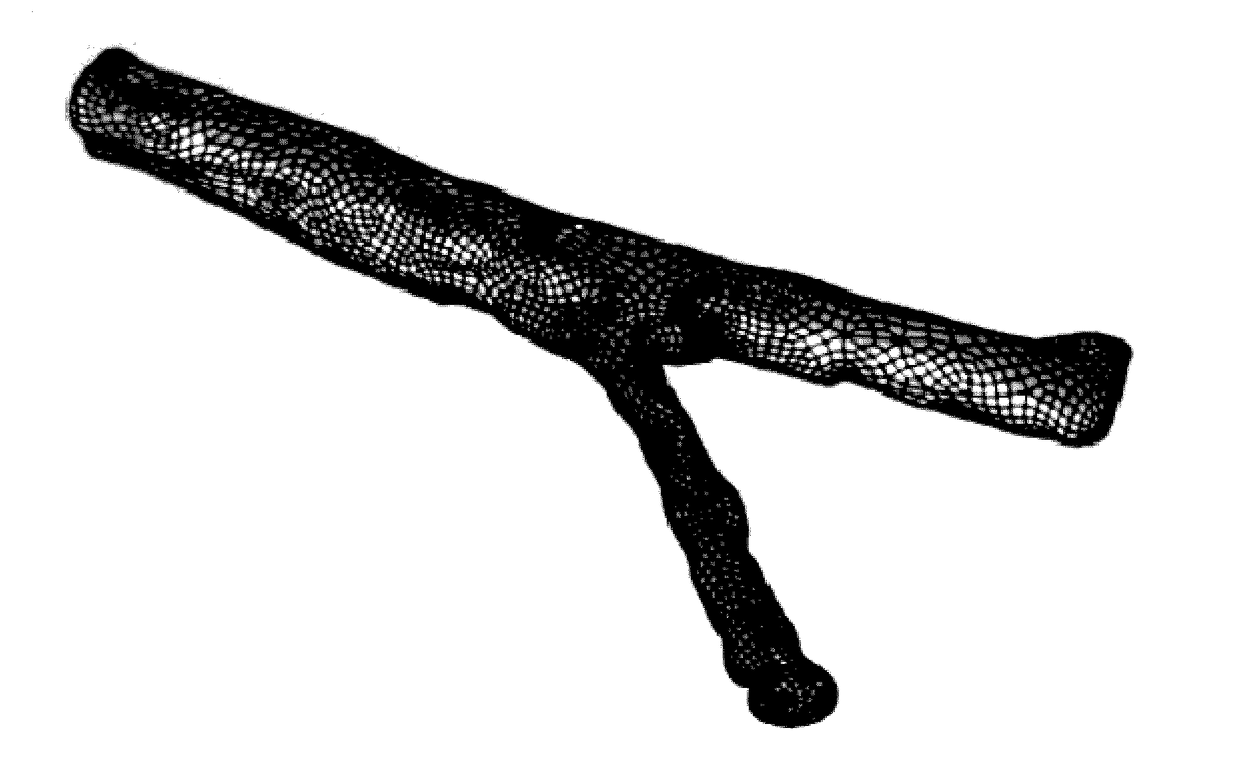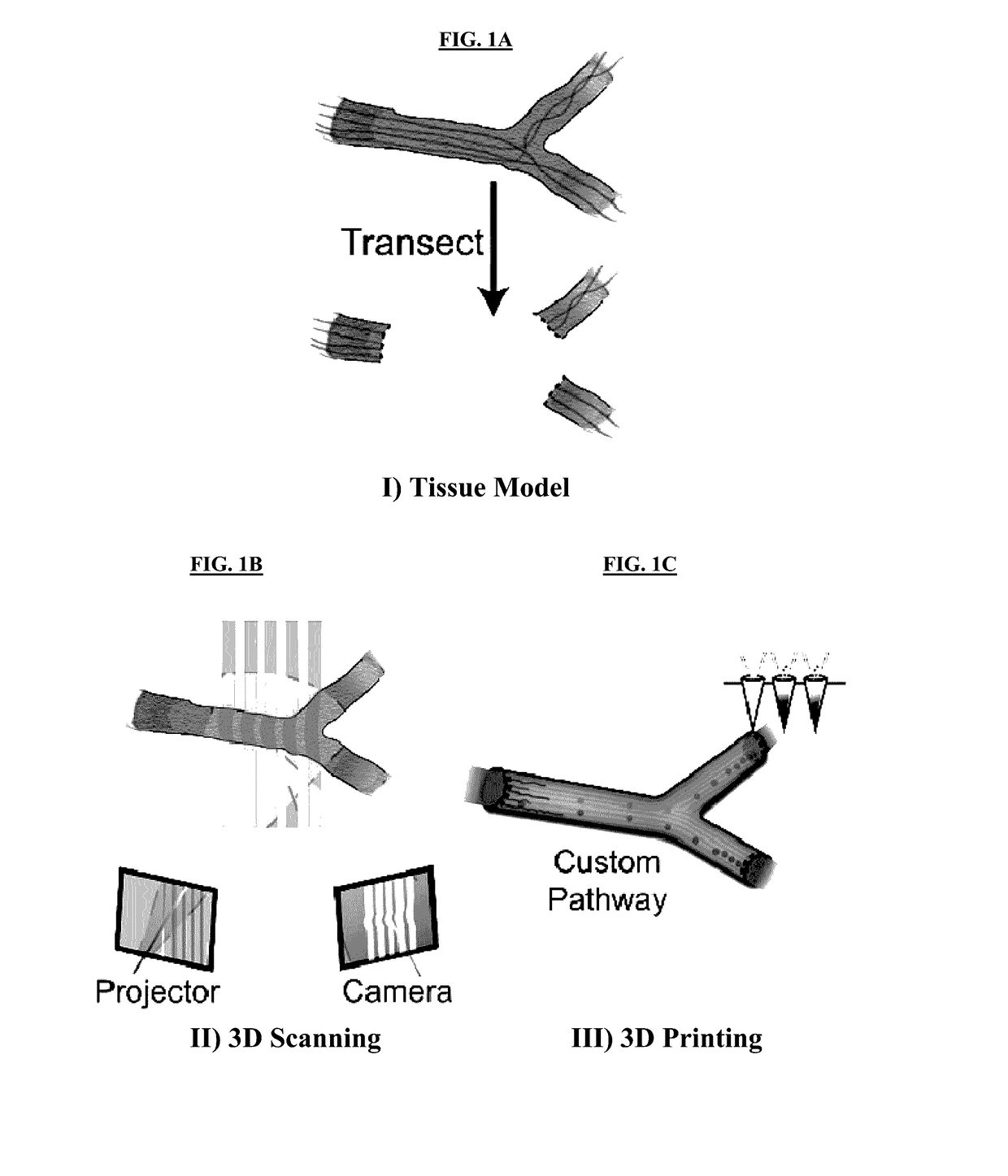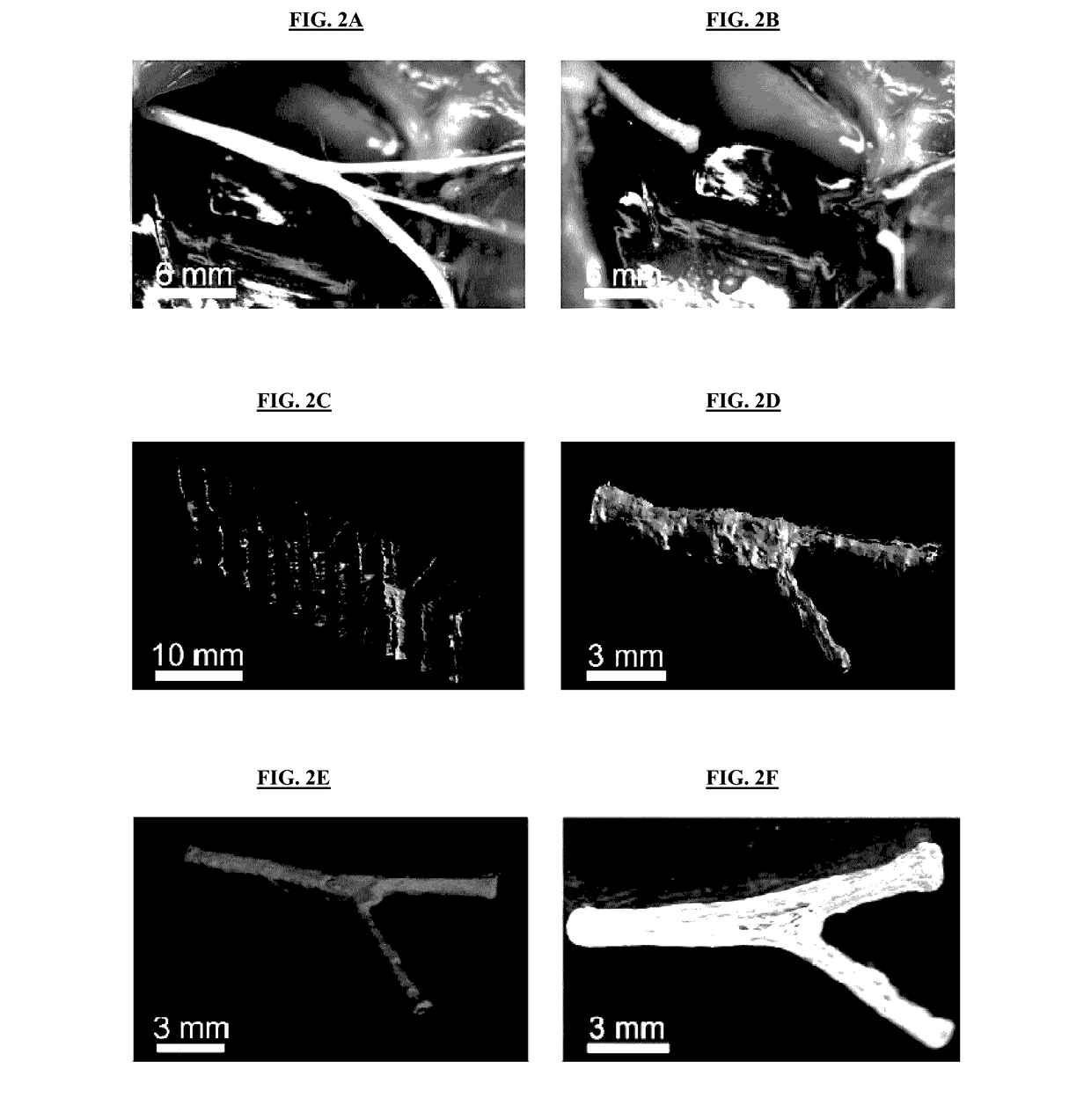3D printed patient-specific conduits for treating complex peripheral nerve injury
- Summary
- Abstract
- Description
- Claims
- Application Information
AI Technical Summary
Benefits of technology
Problems solved by technology
Method used
Image
Examples
example 1
ng Based Customized Nerve Pathway Regeneration
[0112]Conventional nerve guidance channels are typically fabricated around cylindrical substrates, so the resultant devices are inherently restricted to linear structures lacking programmable biofunctionality. In certain embodiments, it is desirable to develop strategies that both allow for the reconstruction of pathways with complex anatomical structures and provide internal biofunctionalization.
[0113]An exemplary strategy to accomplish this goal in a one-pot 3D printing process is illustrated in FIG. 1. The approach encompasses at least three steps: accessing the nerve pathway for imaging, and transecting the bifurcating nerve, which comprises motor and sensory nerve branches from a mixed nerve source (FIG. 1A); imaging the original nerve structure either in situ or ex situ to generate a corresponding 3D computer model (FIG. 1B); and 3D printing a geometrically matching network of pathways that are functionalized with physical cues and...
example 2
ngineering of Nerve Pathway Structure Via 3D Scanning
[0114]As illustrated in FIG. 2A, the sciatic nerve bifurcates into two distinct sensory and motor paths, which become the sural and tibial-peroneal nerves, respectively. Following exposure of the bifurcating nerve via an incision in the superior muscle tissue, the sciatic nerve was transected above and below the bifurcation point (FIG. 2B). Having selected the bifurcating mixed nerve pathway as a model and acquired the representative tissue sample, a cast of the nerve was then prepared and subsequently imaged using a 3D structured light scanning (SLS) technique. SLS is a valuable imaging technique for reverse engineering of geometrically complex free-form objects, including body parts and teeth, but to date has not been applied towards imaging of internal tissues. As illustrated in FIG. 2C, the SLS technique couples well with tissue cast imaging, ultimately generating multiple data sets that collectively describe the 3D geometry o...
example 3
onal and Mechanical Analysis and Optimization
[0116]Mechanical and computational studies afford the opportunity to analyze and optimize the structural integrity of the 3D printed nerve pathways. The mechanical properties of the 3D printed silicone were examined to obtain fundamental parameters and determine the effect of the printing orientation on the mechanical response. As illustrated in FIG. 3A, the 3D computer template of the nerve pathway was first sliced into discrete layers to generate path information for the printer, which creates an inherent grain in the sliced structure due to printing artifacts. For instance, the inset of FIG. 3A shows the grain orientation resulting from slicing in the radial dimension (in contrast to slicing in the axial dimension). The effect of this grain orientation on the mechanical response of the material was tested using tensile strength measurements, in which the tensile load was applied either with or against the grain. As illustrated in FIG. ...
PUM
| Property | Measurement | Unit |
|---|---|---|
| length | aaaaa | aaaaa |
| reference angle | aaaaa | aaaaa |
| length | aaaaa | aaaaa |
Abstract
Description
Claims
Application Information
 Login to View More
Login to View More - R&D
- Intellectual Property
- Life Sciences
- Materials
- Tech Scout
- Unparalleled Data Quality
- Higher Quality Content
- 60% Fewer Hallucinations
Browse by: Latest US Patents, China's latest patents, Technical Efficacy Thesaurus, Application Domain, Technology Topic, Popular Technical Reports.
© 2025 PatSnap. All rights reserved.Legal|Privacy policy|Modern Slavery Act Transparency Statement|Sitemap|About US| Contact US: help@patsnap.com



